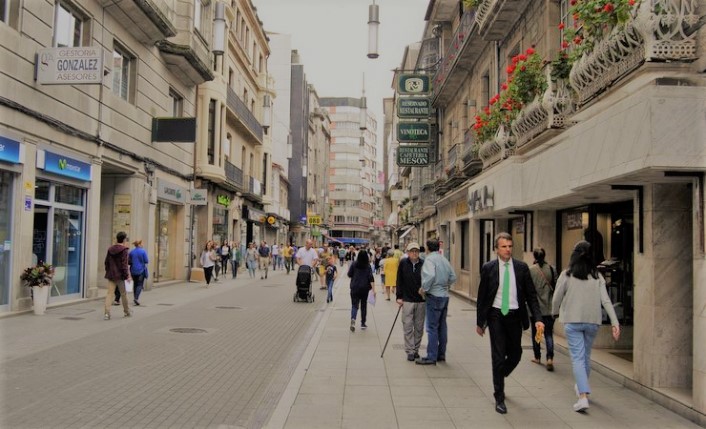How a city got rid of cars - Pontevedra, Spain

Context
Pontevedra is located in the northwest region Galica in Spain, and was like many other western cities flooded by cars during the second half of the 20th century. By the end of the 1990s about 52.000 vehicles circulated in the city every day. This changed as Miguel Anxo Fernández Lores, head of a leftist political party, became the mayor of Pontevedra. Lores intended to give the streets back to the people and to pedestrianize the city.
In Action
Lores actions to transform the streets and to give the space back to the citizens were not a war on cars; his moves were meant to tackle different urban issues like pollution, accessibility and security.
In most of the streets they didn’t build physical barriers to keep the cars out, therefore they created loops to keep people from driving through the city. With this strategy the city wants to get rid of unnecessary traffic, like people who only drive through the city and those who search for a place to park. Hourly street parking is not allowed in the central area, there are only parking spots to leave the car for 15 minutes, for example to pick up elder persons or to drop baggage after a trip. Moreover, in most places delivery vehicles and locals heading to private garages can still circulate. For a longer stay visitors have the opportunity to park for free in garages at the city fringe and take a short walk to the centre.
In the zones where the pedestrianization process was more intense the streets have no sidewalks and were transformed into a “single platform”. Furthermore, the fewer cars which have to pass those streets drive in go slow and coexist peacefully with the pedestrians. In zones with a less intense process, the city expanded the sidewalks to give the citizens more room but still give cars the opportunity to drive on a single lane. Because of pedestrian crossings elevated like speed bumps on steroids the drivers are forced to reduce their pace and to make pedestrians the priority.
To encourage walking even more the city invented a city map that includes distances and approximate walking time between city points.
Results
- Reduction of motor traffic about 97% since 1999
- Improved and higher quality of life
- No traffic fatalities since 2011
- Cleaner air
- Significant lower CO2 emissions
- Children play outdoor
- Elders get around easily
- The few passing by cars drive cautiously
In Depth
http://citiscope.org/story/2017/how-city-spain-got-rid-its-cars

 This project has received funding from the European Union’s Horizon 2020 research and innovation programme under grant agreement No. 723375
This project has received funding from the European Union’s Horizon 2020 research and innovation programme under grant agreement No. 723375